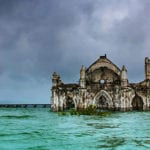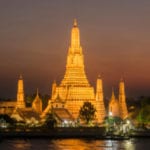 Our World
Our World  Our World
Our World  Miscellaneous
Miscellaneous 10 Intriguing Origins of Popular Carnival Rides
 Weird Stuff
Weird Stuff Ten Unexpected Discoveries Involving Vomit
 Movies and TV
Movies and TV 10 Actors Who Almost Didn’t Take Career-Defining Roles
 Technology
Technology 10 Little-Known Shifts in Computer Science
 Religion
Religion 10 Catholic Histories That Reveal Acceptance of Abortion and Contraception
 Politics
Politics 10 Lesser-Known “First and Only” Facts about U.S. Presidents
 Miscellaneous
Miscellaneous 10 Things You May Not Know about the Fourth of July
 History
History 10 Shocking and Gruesome Founding Father Facts They Don’t Teach in School
 Crime
Crime The Ten Most Vicious Los Angeles Killers
 Our World
Our World 10 Surprising Secrets of Notre Dame Cathedral
 Miscellaneous
Miscellaneous 10 Intriguing Origins of Popular Carnival Rides
 Weird Stuff
Weird Stuff Ten Unexpected Discoveries Involving Vomit
Who's Behind Listverse?

Jamie Frater
Head Editor
Jamie founded Listverse due to an insatiable desire to share fascinating, obscure, and bizarre facts. He has been a guest speaker on numerous national radio and television stations and is a five time published author.
More About Us Movies and TV
Movies and TV 10 Actors Who Almost Didn’t Take Career-Defining Roles
 Technology
Technology 10 Little-Known Shifts in Computer Science
 Religion
Religion 10 Catholic Histories That Reveal Acceptance of Abortion and Contraception
 Politics
Politics 10 Lesser-Known “First and Only” Facts about U.S. Presidents
 Miscellaneous
Miscellaneous 10 Things You May Not Know about the Fourth of July
 History
History 10 Shocking and Gruesome Founding Father Facts They Don’t Teach in School
 Crime
Crime The Ten Most Vicious Los Angeles Killers
10 Hidden Destinations That Just Aren’t Worth Finding
Off the beaten track is one thing, but there are places in the world that the hardiest, most intrepid adventurers would think twice about traveling to. Whether because the climate is so harsh, or the place is so remote, some destinations just don’t seem to be worth the effort.
Here, we look at ten locations you probably would not want to choose for your next holiday. That is, unless you like long trips, frostbite, and very few amenities upon arrival. These places push the adage, “It’s the journey, not the destination,” to its absolute limit.
10 Pitcairn Island
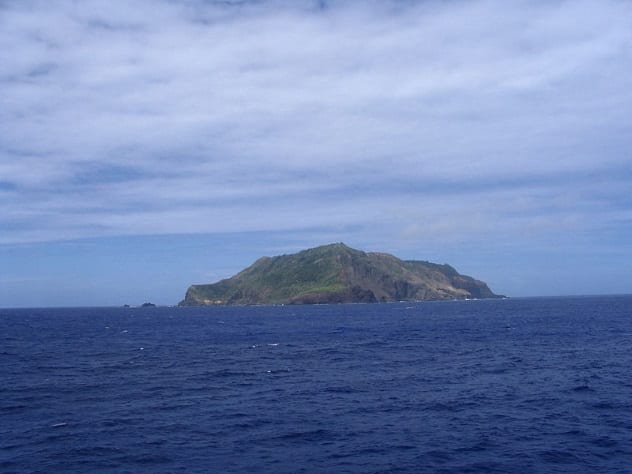
Lying halfway between New Zealand and the Americas, Pitcairn Island is one of the most remote places on Earth. Only 10 kilometers (6 mi) long and 4 kilometers (2.5 mi) wide, Pitcairn was first discovered in 1767. The island was famously settled by mutineers from the HMS Bounty, led by Fletcher Christian. The inhabitants of Pitcairn today are descendants of this crew.
Today, there are only a few islanders left, despite efforts to recruit incomers. It appears that no one wants to move to an island with one shop, where orders need to be placed three months in advance. Though the island now has electricity and even the Internet, it is so isolated and barren that its major export used to be stamps. But who uses stamps anymore?[1]
If you fancy a visit, you can either try to hitch a ride with a passing container ship or fly to French Polynesia and then take a 30-hour boat ride. However, even if you do want to visit, you need to fill out an application, which will probably be refused. It seems that the Pitcairn residents are determined to remain cut off from the rest of the world and have adopted their own, sometimes peculiar, way of life.
9 Ittoqqortoormiit
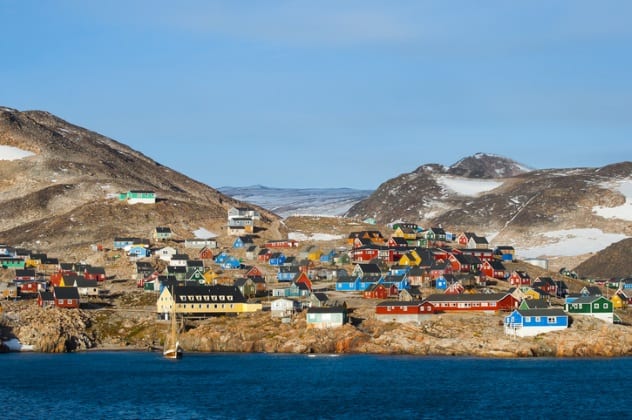
Ittoqqortoormiit is the most isolated town in Greenland, a country not known for its accessibility. The area’s inhabitants are mainly reindeer, musk oxen, and walruses, with only the occasional human. It is hard to reach, being cut off from shipping by ice for nine months of the year, and the land is crisscrossed by fjords.
The 450 locals survive mainly by ice fishing and hunting, as well as some tourism during the three months that ships are able to dock. They also seem to spend a lot of time painting their homes in bright colors.
Those visitors who do make it in come for the wildlife and the scenery. Ittoqqortoormiit is surrounded by national parks and magnificent fjords.[2]
Ittoqqortoormiit is completely dark for two months from mid-November to mid-January; the Sun does not rise at all. During this time, locals mostly sit in their homes and look through color catalogues to decide what color to paint their house next year.
8 Edinburgh Of The Seven Seas
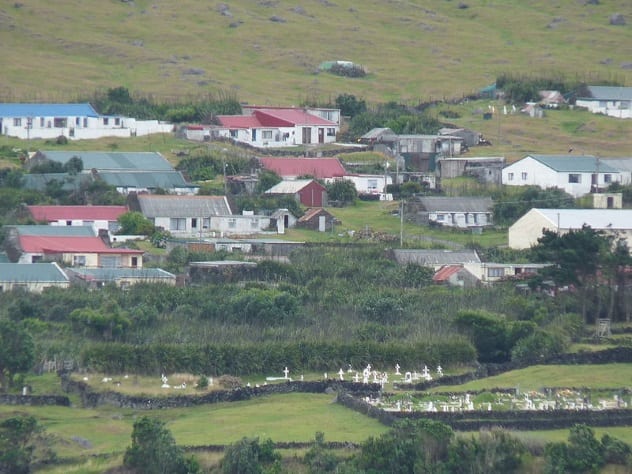
In the middle of the South Atlantic Ocean, on the volcanic island of Tristan da Cunha, you will find a settlement named Edinburgh of the Seven Seas. Its nearest neighbor, Saint Helena (the island where Napoleon was imprisoned) is 2,173 kilometers (1,350 mi) away.
Getting to the island is difficult. Few ships pass that way. Visitors usually catch a lift with polar explorer vessels from Cape Town, which pass around nine or ten times a year. There are around 250 inhabitants on the island, along with a load of penguins, its very own albatross, and a nine-hole golf course that was built by a homesick British official once stationed there. However, the fierce winds and steep slopes make play somewhat tricky and are unlikely to improve your handicap.
The inhabitants of Edinburgh of the Seven Seas are all descendants of the original garrison, stationed on the island to prevent it from being used as a staging post in a rescue mission for Napoleon. After the garrison withdrew, a few men chose to stay behind and started a community founded on cooperation and equality.[3]
However, the community is shrinking, and the islanders have begun to try to recruit newcomers to boost their numbers. They have recently advertised for farmers to join the community and help grow its staple crop of potatoes. Applicants must enjoy their own company and be prepared to give it a good try.
7 Changtang

Changtang is situated on the Roof of The World. With an elevation of over 4,000 meters (13,000 ft), it covers a large area of Tibet, on the border with India. The area is vast but mostly uninhabited except for the snow leopards, brown bears, blue sheep, and wild yak.
Changtang is home to a few nomadic people who make a living from herding animals through the land. At one point, there were up to half a million people eking a living on land too barren for crops. The weather in Changtang is unpredictable at best, with short summers, bitter winters, and frequent storms, but those who brave it are rewarded with spectacular views and amazing wildlife.
Those inhabitants that there are have managed until recent times without the need for money, having established a sophisticated barter system. However, this is changing due to government regulation and taxation. Ah, progress.[4]
6 Utqiagvik
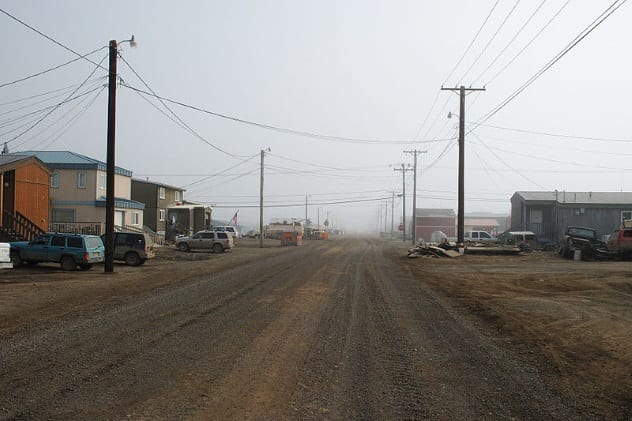
Formerly known as Barrow, Utqiagvik, Alaska, is the northernmost town in the United States. It occupies 55 square kilometers (21 mi2) and is 515 kilometers (320 mi) north of the Arctic Circle. Its population totals roughly 4,000 people, mostly Inupiat Eskimos. There are few attractions for visitors who do make the trip, unless they are particularly fond of ice and snow, although there is always the possibility of catching sight of a polar bear scavenging for food around the municipal dump.[5]
However, changes in global temperatures are affecting the region, and sightings of animals previously unknown in these areas are being reported. There are even reports of polar bears and grizzly bears mating, producing hybrid “grolar” bears. It is believed that this is not the first time that these species have interbred. Scientists have noticed similarities in the bears’ DNA structure which leads them to believe that the two species have crossbred in the past when the destruction of their habitats has threatened their continued existence.
Though the wildlife may have adapted to the changes in habitat, the Inupiat Eskimos have sometimes struggled to adjust to the growing economic development of the area, and rates of depression and suicide have increased as a result.
5 Easter Island
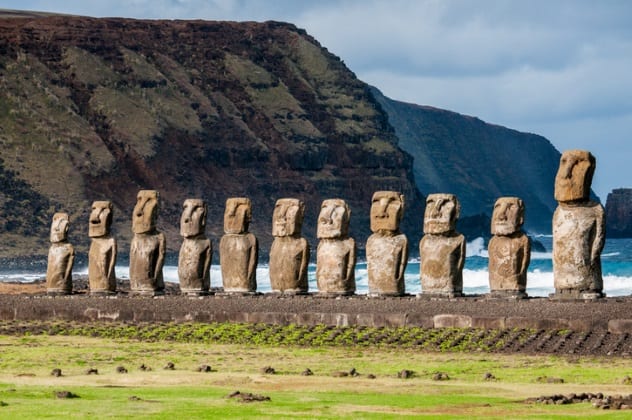
One of the most famous and mysterious places on Earth, Easter Island, well off the coast of Chile, is still one of the most inaccessible. It was “discovered” on Easter Sunday 1722 by a group of Dutch explorers, thus ignoring the island’s indigenous population, such as it was. The island once boasted a population of 12,000, but this had dwindled to 111 by the time the explorers arrived, and to 101 ten minutes later.
In 1722, the inhabitants of Easter Island were slowly starving to death. The population had dwindled over the last few centuries, it seems, from starvation due to the felling of the trees on the island. Some of the trees would have been cut down to transport the stones, while others would have been burned for firewood or cleared for growing crops. It is also believed that the seeds of the great palm trees were eaten by rats, which prevented further growth. Unfortunately, the explorers were not to be the islanders’ salvation. Those of the natives who were not shot as the incomers landed mostly succumbed to smallpox and syphilis, and soon, the native population was completely wiped out.
How the original settlers arrived there is a mystery, as is the reason they populated the island with stone carvings that perpetually looked out not to the sea but over the island. There are nearly 900 moai (the local name for the statues) on the island, some of them unfinished. The stones weighed up to 80 tons and were somehow moved from the quarry to their lookout posts around the island.[6]
4 The Kerguelen Islands
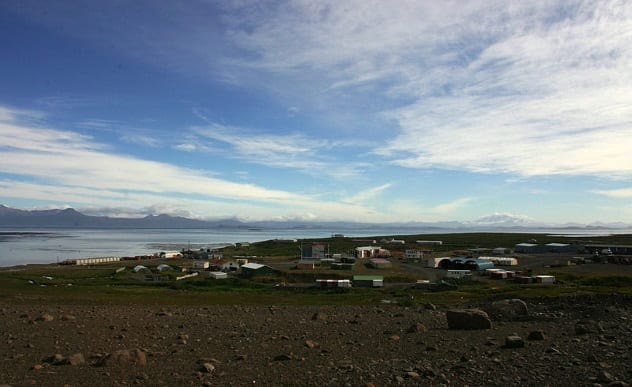
Once called the Desolation Islands, the Kerguelen Islands’ rebranding doesn’t quite disguise the fact that the islands really are among the most desolate places in the world. Situated in the Southern Indian Ocean, Kerguelen is made up mostly of inhospitable peaks and active glaciers.[7]
The islands are home to large penguin and seal populations, though not many people. Most of the residents are French scientists who are studying the weather and climate change. The islands contain no native mammals, though the marine ecosystems are teeming with life. The whaling ships that were once a common sight in the area have now been banned, and the numbers of whales and seals are increasing every year.
Unless you are a marine biologist or a meteorologist who speaks fluent French, it is unlikely that you will ever visit the Desolation Islands, but as there is little there but marine biology and weather, you probably wouldn’t miss it.
3 McMurdo Station
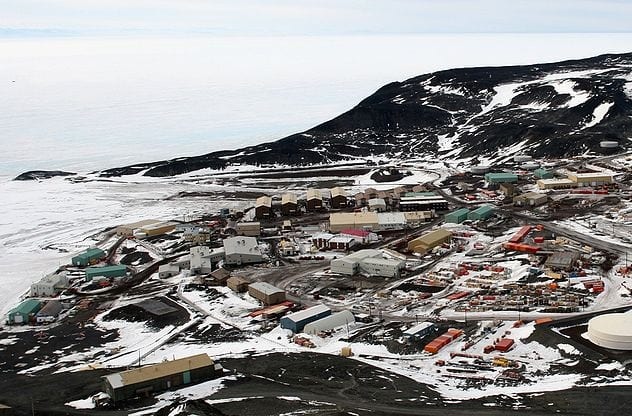
McMurdo Station is built on Hut Point Peninsula on Ross Island. This is the most southerly piece of solid ground accessible to ships. The station was established in 1955 as a hub for the US Antarctic Program. It boasts a harbor, a landing strip, a helipad, and all the facilities needed to provide year-round support for scientists and researchers working in the area.
The inhabitants number around 250 during the winter but can rise to over 1,000 during the summer months. Ross Island itself contains a number of research stations, a large penguin population, and Mount Erebus, an active volcano.
Hut Point gets its name from the wooden hut erected by the famous explorer Captain Robert Falcon Scott. The hut was later used by Ernest Shackleton in his 1907 Nimrod expedition. It is now protected by the Antarctic Treaty as an Area of Special Protection. The area also contains a number of memorials to Scott’s ill-fated expedition, including a cross on Observation Hill to commemorate the explorers who didn’t make it home.[8]
2 Socotra
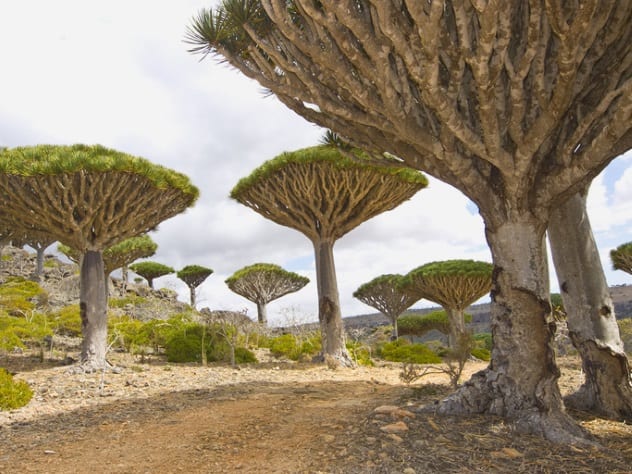
Socotra lies off the coast of Yemen. The island has been isolated from its neighbors for millions of years and has developed its own unique species of flora and fauna. One of the most startling-looking plants found on the island is the dragon blood tree. It was said to have first grown on the spot where two brothers fought to the death. The blood of the two brothers was said to have nourished the tree, which explains why its sap is a crimson red color. Where dragons come into it is anyone’s guess.
The island, known as the Galapagos of the Indian Ocean, is home to over 700 endemic species. Nomadic Bedouin tribes still roam the island, sleeping under the stars in the summer and sheltering from the rain in the winter. However, recent influences from the United Arab Emirates have begun to change Socotra, and the once-remote island is fast becoming an outpost of the UAE.[9]
1 Oymyakon
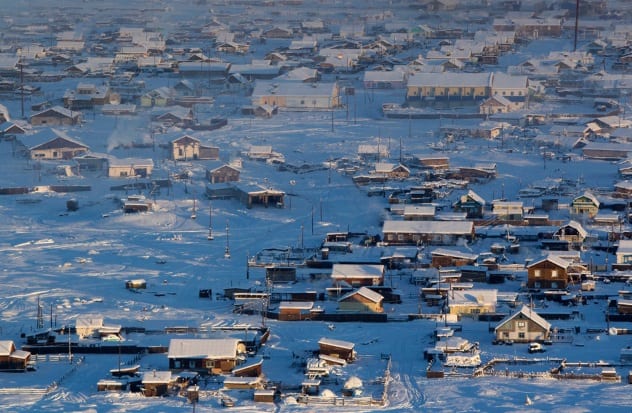
Oymyakon is officially the coldest permanently inhabited place on Earth. Situated in Siberia, temperatures at Oymyakon have been recorded as low as –67 degrees Celsius (–80 °F), the lowest temperature ever recorded outside the Antarctic. It is so cold that the town’s official thermometer, installed by some misguided official as a tourist attraction, broke when the mercury inside it froze.[10]
Oymyakon, meaning “water that never freezes,” is home to a thermal spring, which is probably just as well. Originally built as a stopover point for reindeer herders, who watered their animals at the spring, Oymyakon now has around 500 permanent residents, a shop, and even a school, although this will close if the temperature drops below –50 degrees Celsius (–58 °F). Big softies.
If you travel to Oymyakon, and why wouldn’t you, you can expect to see a lot of snow and not much else. Except, of course, a thermometer. Slightly used.
Ward Hazell is a writer who travels, and an occasional travel writer.
Read about more places you might want to think twice about traveling to on 10 Of The World’s Deadliest Tourist Destinations and Top 10 Destinations on the US Travel Advisory List.
